Cooling system and backplate
The special feature is the use of a now more shortened "sandwich" system, which uses a kind of cooling and stabilization frame between the top of the board and the actual heat sink. For the first time, you are relying on an integrated VRM heat sink for the 8 GPU phases, while the memory VRM is further cooled over this frame (unfortunately).
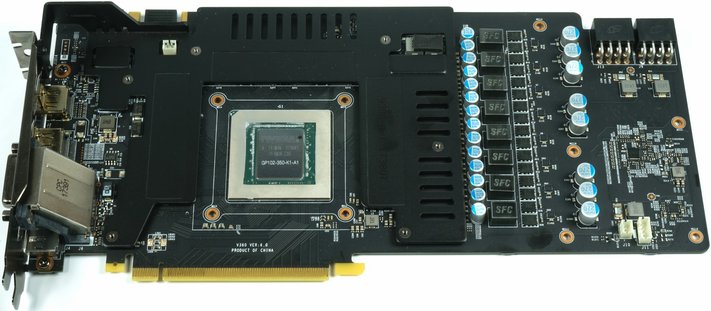
| Cooling system at a glance | |
|---|---|
| Type of cooler: | Air |
| Heatsink: | Nickel-plated heat sink, GPU and voltage converter for THE GPU |
| Cooling fins: | Aluminum, horizontal alignment related |
| Heatpipes | 2x 8mm, 4x 6 mm, nickel-plated |
| VRM cooling: | GPU VRM via real heat sink built into the cooler Storage VRM only indirectly via cooling frame only MOSFETs are cooled |
| RAM cooling | via mounting frame and indirectly via the heatsink |
| Fan: | 2x 10 cm fan modules (9.7 cm rotor diameter) 1x 9 cm fan module (8.5 cm rotor diameter) 14 rotor blades semi-passive lyrised |
| Backplate | Aluminum, blackened no cooling function, foiled inside RGB Effects |
The backplate is purely for optical enhancement and wants to score with an RGB frame. In terms of cooling, however, it does not bring anything. So check it off, yet, because we have suggested MSI the targeted use of pads. The previously mentioned cooling and assembly frame absorbs the waste heat from the memory modules and also releases it to the GPU heat sink via a further layer of thermal conduction pad.
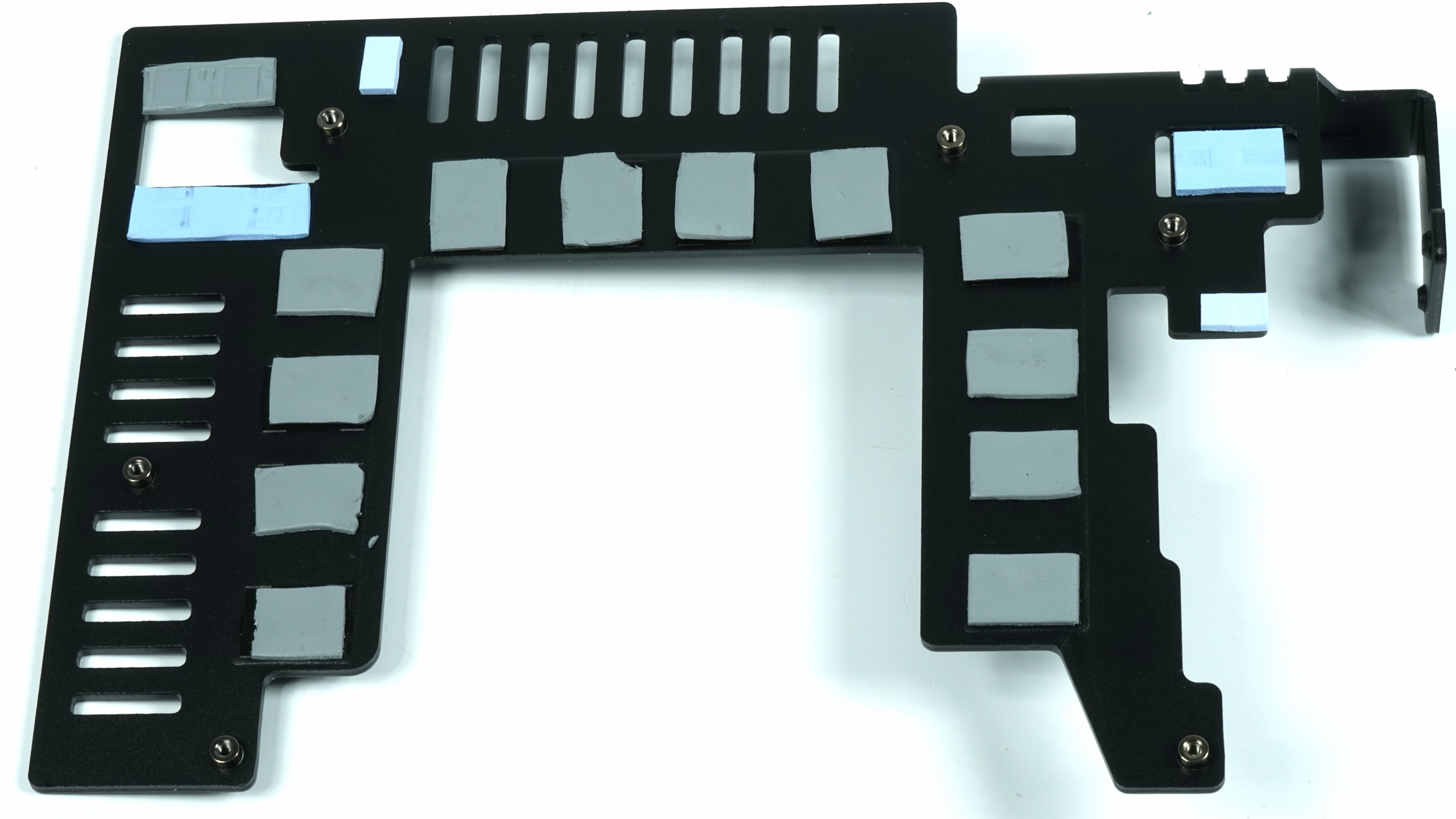
The voltage converters of the memory are also cooled by this frame. The heat sink is nickel-plated and very smooth. MSI relies on a total of six fast, nickel-plated heatpipes made of composite material, the radii of which are relatively large at the necessary bends. This, like the slightly smaller diameter, ensures better performance.
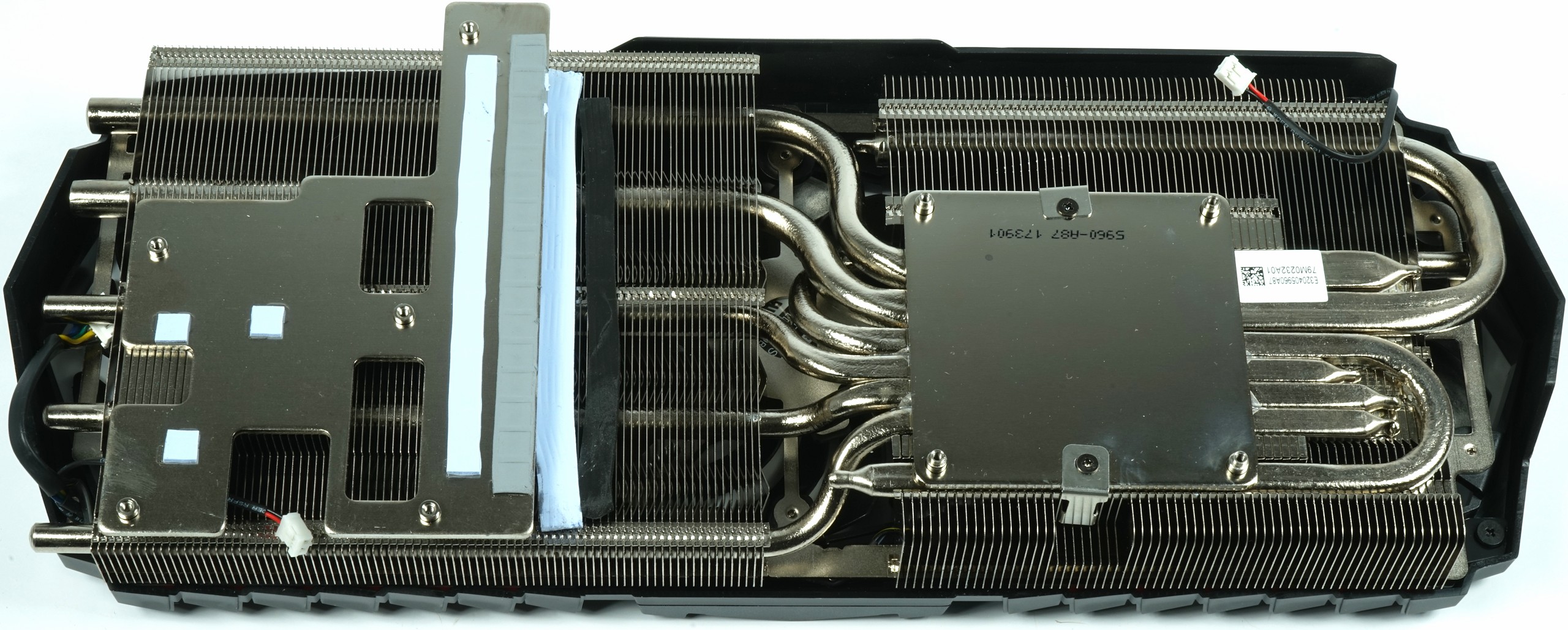
Fan curves and noise emission ("volume")
The fan curves indicate a rather conservative and volume-optimized control. The hysteresis is perfect, the starting pulse is absolutely fine and is strong enough not to be disturbing.
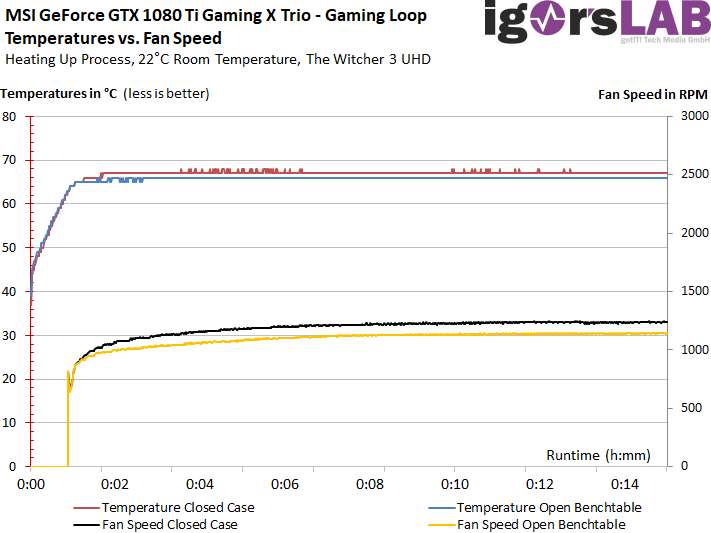
The whole thing does not look much different with the stress test, although due to the slightly lower power consumption the speeds are even lower. In summary, the card is extremely restrained despite three fans with such low acoustics.
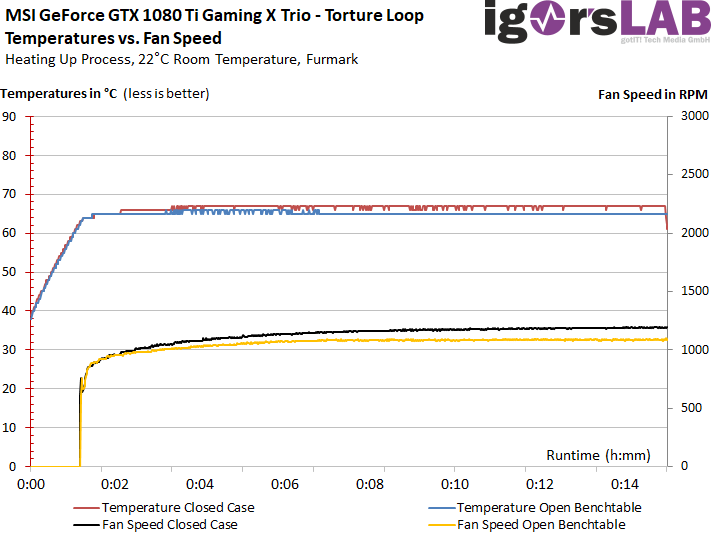
There would still be enough reserves to let the fans rotate a little faster, in order to increase the already good cooling performance harmless to the ears even further.
| Measurements for fans and noise emission |
|
|---|---|
| Fan speeds Open Benchtable Maximum |
1159 rpm |
| Fan speeds Open Benchtable Average |
1130 rpm |
| Fan Speeds Closed Case Maximum | 1255 rpm |
| Fan Speeds Closed Case Average | 1236 rpm |
| Noise emission (air) Maximum |
33.2 dB(A) |
| Noise Emission (Air) Average |
30.9 dB(A) |
| Noise Emission (Air) Idle | 0 dB(A) |
| Sound characteristic / Hearing impression |
hardly lower frequency bearing noises easily audible engine noise< 1 Hz hardly spool-feathers discreet air/demolition noises |
To illustrate our subjective audio impression once again, we now have a high-resolution graphic with the complete frequency spectrum of our laboratory measurement:
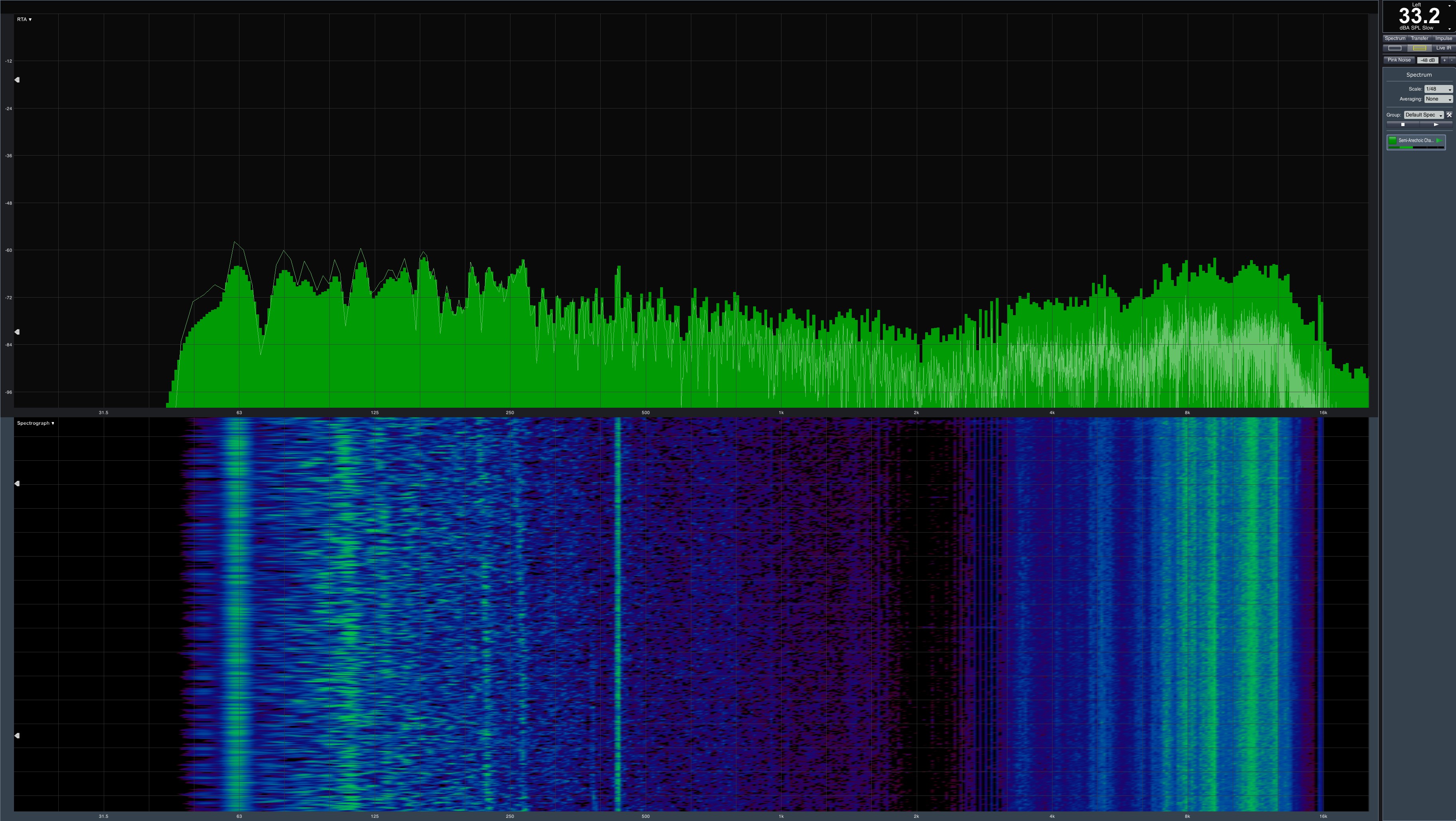
- 1 - Einführung und Übersicht
- 2 - Platine und Spannungsversorgung im Detail
- 3 - Gaming Performance: 2560 x 1440 Pixel (WQHD)
- 4 - Gaming Performance: 3840 x 2160 Pixel (UHD)
- 5 - Leistungsaufnahme im Detail
- 6 - Temperaturen, Taktraten, OC und Wärmebildanalyse
- 7 - Kühlerdetails und Geräuschentwicklung
- 8 - Zusammenfassung und Fazit

































Kommentieren